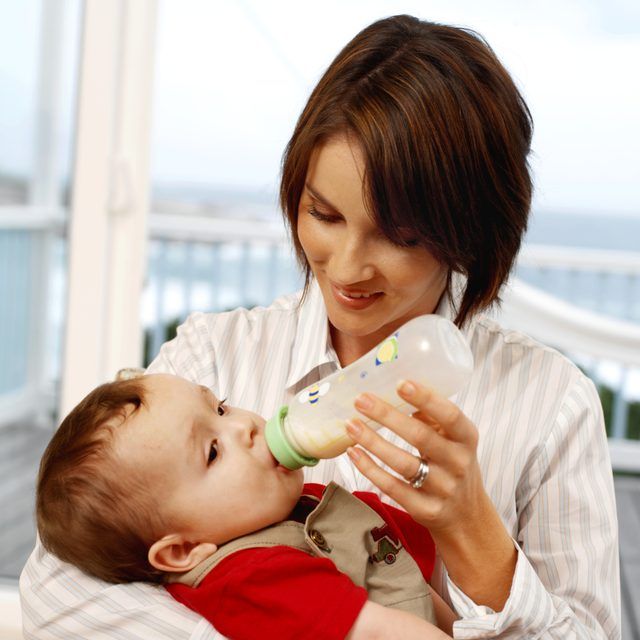Newborn baby not feeding much
Breastfeeding sleepy and reluctant babies
Go backExplore this article's topics:
Feeding Breastfeeding Common breastfeeding challenges
There are lots of reasons why your baby may be reluctant to feed. It doesn’t mean you aren’t doing a good job as a mum. Don’t put too much pressure on yourself to know all the answers straight away and speak to your midwife or health visitor if you have any questions or concerns, or are looking for ways to make feeding more comfortable.
How often should my baby feed?
All babies are different, but it's very common for babies not to feed all that much in the first 24-48 hours, and some don't attach at all. However, from day 2-3 days babies should become much more awake and feed in more frequent (but probably irregular) bursts at least 6 times in 24 hours.
How do I know if my baby's getting enough milk?
Photo of a baby breastfeeding
Breastfeeding at first can be really hard to get used to and you might find yourself wondering if your baby has had enough milk - it can be very hard to judge how much breastmilk your baby has had, but they are clever wee things and you have to have some faith that your baby knows whether it needs more milk. There are signs to look out for if you think your baby isn't getting enough milk.
Why are some babies reluctant to feed?
This happens most often when babies don't get skin-to-skin contact with mum soon enough or for long enough after the birth. Ideally, you want skin-to-skin contact with your baby straight away and for as long as it takes for your baby to want to feed. If you don’t have any complications, your midwife will help you get skin-to-skin with your baby quickly after they are born. Some reluctant babies are just too tired, sore, or sedated to feed after birth, and others can't because they are premature, ill or jaundiced.
What if I miss my baby's signs that they're hungry?
New mums sometimes miss or don't understand their baby's feeding signs – our page about learning your baby's cues explains what you should be looking for. Don’t worry if it takes a while to get used to when your baby wants a feed – it's something you are both learning together and it's baby steps for both of you. It's completely understandable to be worried about how much milk your baby is getting if they're not feeding in the early hours and days. It might help to know that babies are born with several days' supply of fluid and stored fat to get them by until they're ready to feed.
It's completely understandable to be worried about how much milk your baby is getting if they're not feeding in the early hours and days. It might help to know that babies are born with several days' supply of fluid and stored fat to get them by until they're ready to feed.
What's the solution?
Your midwife will check in on you to make sure your baby is well and to help you spot the signs that they're ready to feed – remember you can ask your midwife (in the hospital or at home) to help show you how to get in a comfortable position to help get your baby feeding. This video shows just this – very often all it takes is some help with positioning, skin-to-skin contact and a little patience!
Top tips to encourage a reluctant or sleepy baby to breastfeed
Tip #1: Hand expressing to keep your milk supply up
Start hand-expressing your colostrum – this is the first milk you make, and helps protect your baby from illness and infection. You can give this to your baby by syringe, spoon, dropper or cup. Expressing helps to build a good milk supply for when your baby is ready to feed. If this is your first time breastfeeding, it will take some time to get used to expressing your milk. You can find out more about expressing here.
You can give this to your baby by syringe, spoon, dropper or cup. Expressing helps to build a good milk supply for when your baby is ready to feed. If this is your first time breastfeeding, it will take some time to get used to expressing your milk. You can find out more about expressing here.
In the first couple of days you only make small amounts of colostrum so don’t become disheartened if it is difficult or takes time. It will get easier as each day and week goes by.
Tip #2: Try lots of skin-to-skin contact
Aim for lots of skin contact and being close to soothe your baby and give them the opportunity to feed.
Tip #3: Try to find a comfortable feeding position
Biological 'laid back' breastfeeding positions can help encourage babies to feed. Your midwife will be able to show you comfortable ways to feed. You can find out more about feeding positions here.
Tip #4: Get your baby ready for a feed
Massaging your baby's skin, changing their nappy and expressing a little milk for them to taste can help get your baby interested in feeding.
Tip #5: Don’t force your baby to feed
Don’t push your baby by the head or try to force them to feed as this could put them off completely.
Getting to know your baby
Learning your baby's cues
Signs your baby isn't getting enough milk
Refusing the breast
Looking after yourself with a newborn
The Scotland wide donor milk bank
This article was created as part of
Last updated: 31 May, 2022
Signs baby isn’t getting enough breastmilk
Every parent wants to do everything they can to help their child grow healthy and strong.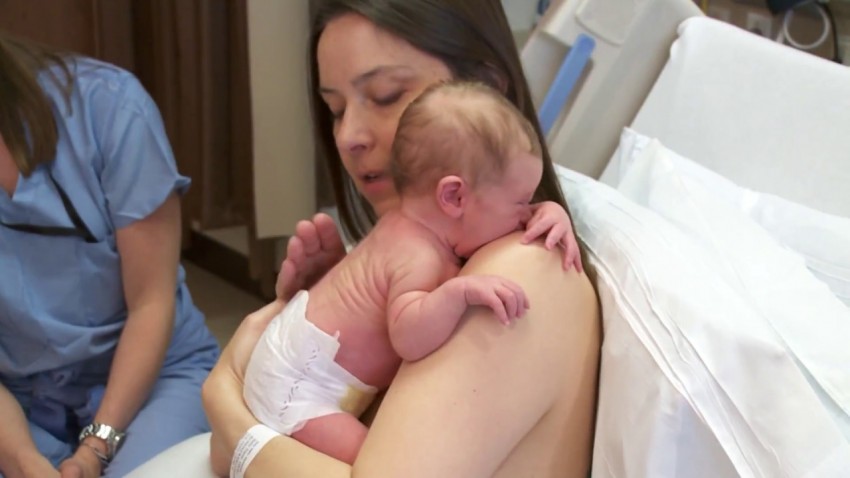 And breastfeeding is one of the best things you can do for your baby. But it doesn’t always go smoothly, especially when you’re just starting out. So, you may wonder at some point: Is my baby getting enough breastmilk? How can I tell?
And breastfeeding is one of the best things you can do for your baby. But it doesn’t always go smoothly, especially when you’re just starting out. So, you may wonder at some point: Is my baby getting enough breastmilk? How can I tell?
Try not to worry. We have a team of breastfeeding and lactation experts to help you and your baby work through breastfeeding challenges.
Read on to learn how to tell if baby is getting enough breastmilk, some suggestions to help make sure baby gets enough to eat, and when you should make an appointment with your baby’s doctor or a lactation consultant.
How do I know if my newborn is eating enough?
If you’re exclusively feeding your baby from the breast, rather than pumping to bottle feed, it’s hard to tell exactly how much your baby is eating. Here are six signs your baby is getting enough breastmilk.
1. Baby is feeding regularly
Babies breastfeed frequently and often in clusters. Frequent, effective feedings help your baby grow, and help ensure you have enough breastmilk for the next feeding.
During the first two months, expect your baby to nurse 10 to 12 times in a 24-hour period. In the beginning, each breastfeeding session will likely take between 20 to 45 minutes. If you are feeding your baby less than eight times a day, or if the sessions are very short or very long, you should talk to your baby’s doctor.
As your baby grows comfortable with nursing and gets a little older, they’ll be able to get what they need in a shorter amount of time – and with fewer nursing sessions.
2. Baby is swallowing during feeding
When baby first latches onto your breast, they will suck rapidly to get the milk flowing. But once things are going, the sucking will become slower and deeper as they pull the milk into their mouth and swallow.
Watch baby’s jaw for movement and listen for swallowing sounds. If you see baby’s jaw move or hear them swallowing, they’re getting at least some breastmilk.
If baby isn’t getting enough milk, their sucking may not progress to that slower, rhythmic pulling.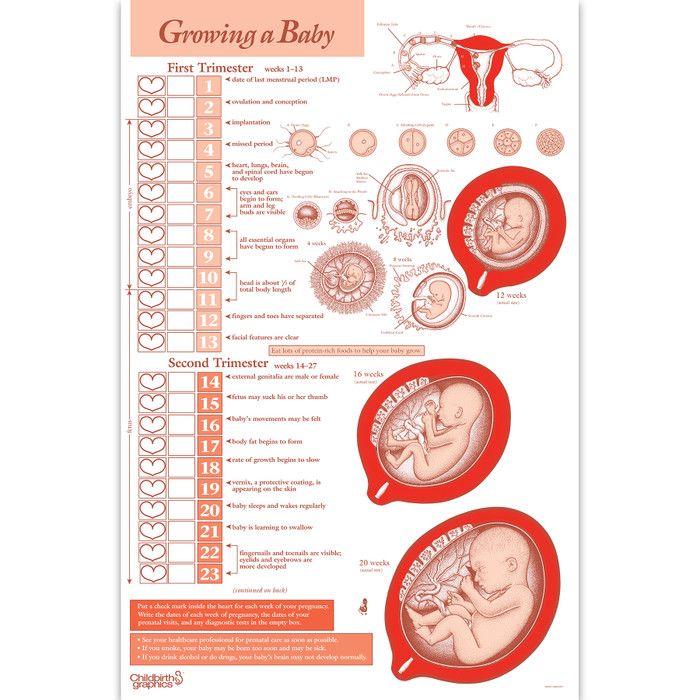 Baby may also fall asleep at the breast, take long breaks while breastfeeding or give up within a couple minutes.
Baby may also fall asleep at the breast, take long breaks while breastfeeding or give up within a couple minutes.
3. Baby is content and happy
If your baby seems satisfied after breastfeeding, they’re likely getting enough milk. But if they always want to nurse, it may be a sign that baby is still hungry after breastfeeding – especially if they appear sluggish or they’re losing weight.
4. Your breasts feel softer and not as full after feeding
Your breasts should feel softer at the end of a feeding. Emptying as much milk from your breasts as possible will help create more supply for the next feeding.
If you’re worried about your milk supply or that you’re not eating the right things for breastfeeding, here’s some good news: Nearly all moms produce enough breastmilk to feed baby without any major changes to their diet.
Breastfeeding can be uncomfortable at times, but it shouldn’t be painful. Pain in the breasts or nipples can be cause for concern. So if you are experiencing pain, talk to your baby’s doctor or a lactation consultant about it.
So if you are experiencing pain, talk to your baby’s doctor or a lactation consultant about it.
5. Baby is gaining weight as expected
It’s normal for a newborn’s weight to fluctuate during the first few days of their life. Typically, by day 10, a baby’s weight has rebounded to their birth weight. Until 6 months of age, babies usually gain between 5 and 8 ounces a week. At five months, your baby’s weight should be double what it was at birth.
6. You’re changing a lot of diapers each day
Diaper duty starts small but, before you know it, those diapers pile up.
How many dirty diapers should a newborn have per day? And what about poopy diapers? One thing that’s helpful to remember is that during their first week, your baby will have about the same number of wet and poopy diapers as the days of their life. After that, parents can expect to change eight to 10 diapers each day.
- Day 1: At least one wet and one poop
- Day 2: At least two wets and two poops
- Day 3: At least three wets and three poops
- Day 4: At least four wets and four poops (from this point, poops should be yellowish in color)
- Day 5 and beyond: At least 5-6 wets and 3-4 poops
[ Click on the image below to enlarge and view it in a new window ]
That’s a lot of dirty diapers! To keep baby’s skin healthy, change them as soon you can and make sure to get into all the folds of baby’s skin when cleaning out the poop.
Also pay attention to your little one’s bottom. If you notice redness, bumps or signs of severe diaper rash, talk to your baby’s doctor about what you can do.
How to help your baby feed more effectively
It’s often said that timing is everything. This is certainly true when it comes to breastfeeding sessions, as well as when to introduce bottle feeding and pacifiers.
Watch for cues that your baby is hungry
You can help make sure your baby is eating enough by looking for opportunities to breastfeed, rather than waiting until baby is upset and crying.
If your baby is hungry, they’ll let you know in a variety of ways ranging from subtle suggestions to outright demands. We talk about these in terms of early cues, mid cues and late cues.
Early hunger cues can include stirring from sleep, opening their mouth or turning their head toward your breast when you stroke the corner of their mouth.
If you don’t respond to these early cues, baby has other ways to let you know – which brings us to mid cues. Some common mid cues are stretching, becoming more physically active and bringing their hand to their mouth.
Some common mid cues are stretching, becoming more physically active and bringing their hand to their mouth.
If these mid-cues don’t result in a breastfeeding session, baby will take drastic measures to let you know that they are really, really hungry. They’ll cry and howl. They’ll flail their arms and legs around. They’ll turn red from all the exertion. These are late feeding cues and at this point, baby is often too upset to eat. So, you’ll need to calm them before you can feed them.
By feeding your baby when you see an early cue, you can help keep feedings calm and effective. It’s so much easier for baby to focus on getting enough to eat if they aren’t using all their energy expressing the big emotions they’re feeling.
This poster shows what baby’s feeding cues may look like.
[ Click on the image below to enlarge and view it in a new window ]
Only introduce a bottle or pacifier when the time is right
Bottles and pacifiers encourage a different type of sucking than breastfeeding. So you’ll want to wait until your little one is fully comfortable with breastfeeding before introducing either.
So you’ll want to wait until your little one is fully comfortable with breastfeeding before introducing either.
Most babies really latch on to breastfeeding by about two to four weeks after their birth. But for some, especially those who were born early, it can be longer.
You also don’t want to wait too long for baby’s first bottle. Introducing a bottle too late can be one reason why babies refuse a bottle. A lactation consultant or your child’s doctor can help you figure out the best way to start the breast to bottle transition.
Pacifiers are great for soothing and a recommendation for safe sleep for babies, but like with the bottle, hold off until baby has gotten really good at breastfeeding – usually about a month.
Signs your baby
isn’t getting enough breastmilkBreastfeeding is a little different for every parent and baby. But there are a few signs baby may not be getting enough to eat to watch for:
- Baby is sluggish or sleeping longer than usual.
 This is especially something to watch for in newborns. Because they are so little, newborns need to eat every 2-4 hours.
This is especially something to watch for in newborns. Because they are so little, newborns need to eat every 2-4 hours. - Feedings are too long or too short. If baby’s not getting enough milk, they may quickly give up on nursing after a couple minutes. Or, they may keep trying for over an hour.
- Latching is really painful for you or it appears that baby hasn’t latched deeply enough.
- Baby is not producing stools or their urine is not pale.
- Baby isn’t gaining weight.
What to do if baby isn’t eating enough breastmilk
If you think your baby isn’t getting enough breastmilk, get breastfeeding support from your baby’s doctor or a lactation consultant. They can help you and your baby work through latching problems, low milk supply and feeding positions, and identify any underlying problems like tongue-tie. Just like you support your baby with breastmilk, they’re here to support you!
Choose a location and call to make an appointment with a lactation consultant
Poor appetite in a newborn
Newborns and infants almost immediately after birth acquire a sucking reflex and, accordingly, feeling hungry, require it to be satisfied. Mother's breast milk is the most useful and necessary food for the growth and development of the baby. Therefore, if a baby suddenly loses appetite, does not gain weight, refuses to breast or a bottle, there are a number of reasons for this, which you need to figure out and understand what is wrong. If the refusal of food occurred once, there is no need to sound the alarm. But in the case of a regular repetition of the situation, it is better to turn to pediatrician who can help a little person and mother to improve nutrition.
Mother's breast milk is the most useful and necessary food for the growth and development of the baby. Therefore, if a baby suddenly loses appetite, does not gain weight, refuses to breast or a bottle, there are a number of reasons for this, which you need to figure out and understand what is wrong. If the refusal of food occurred once, there is no need to sound the alarm. But in the case of a regular repetition of the situation, it is better to turn to pediatrician who can help a little person and mother to improve nutrition.
So, what are the causes of poor appetite in a newborn? Why is he not gaining weight and with crying he throws his mother's breast or a bottle?
- Special structure of the mother's nipple. Because of the inverted or flat nipple, feeding is difficult for the baby, he needs to make a lot of effort to get milk. If the baby does not eat for this very reason, then his smacking of his lips, anxiety and crying as soon as he is at the mother's breast will be indicative.
 In such a situation, the mother will have to express milk or feed in a certain position that is comfortable for the baby so that the baby can get enough milk.
In such a situation, the mother will have to express milk or feed in a certain position that is comfortable for the baby so that the baby can get enough milk. - Intestinal colic . Such cramping pains in the tummy most often occur in the first weeks after birth, when the not yet fully formed gastrointestinal tract can not cope with the incoming milk or mixture. As a result, the child suffers from increased gas formation, and his appetite is sharply reduced. If the baby twists his legs during feeding, pulls them up to his stomach, starts crying abruptly and interrupts feeding, most likely it is colic.
- Dysbacteriosis. Does the baby spit up often, he develops skin rashes , does he gain weight poorly and eats very little for feeding? Most likely, this is a dysbacteriosis that causes a loss of the baby's appetite. Probiotics and a diet for the mother, prescribed by a pediatric specialist, will help in this case and normalize the process in the child's gastrointestinal tract.
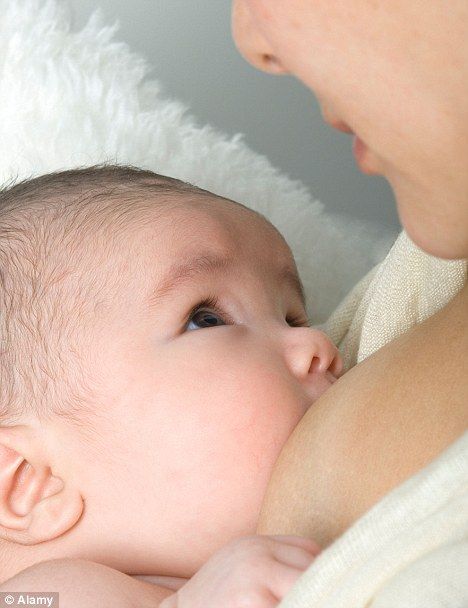
- Lactase deficiency. Lactose intolerance, which is contained in milk, may cause a newborn to refuse food. No need to be upset if the child does not eat due to the lack of the necessary enzyme in the body. Lactase deficiency is treated, and this is not at all a reason to wean a child from the breast. A good pediatrician will prescribe treatment for the baby and help to cope with such difficulties.
- Runny nose . If the baby has a stuffy nose, most likely he does not eat well or refuses to eat at all. Eliminating congestion of the respiratory tract, you normalize the process of feeding.
- Thrush and/or inflammation in the mouth is a common ailment in infants. Small white sores, plaque and redness of the mucosa indicate an inflammatory process in the oral cavity that prevents the baby from receiving milk normally.
- Teething . If the baby's first teeth began to cut, then this painful and unpleasant moment can greatly affect the child's appetite.
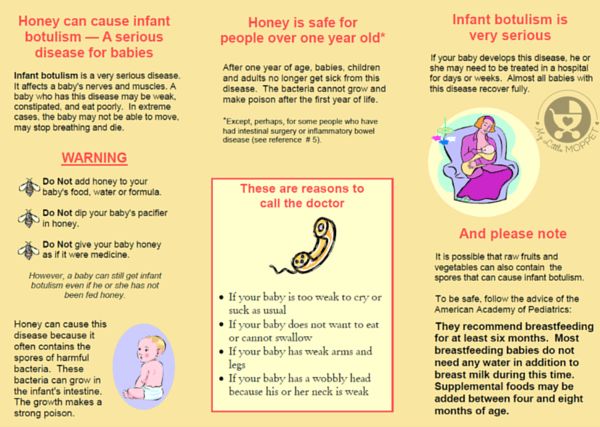
- Taste of mother's milk . If a nursing mother ate some kind of spicy or strong-smelling product, then this immediately affects the taste of milk. Garlic, various spices can change the taste of food familiar to the child and lead to loss of appetite in the baby.
- Lactational mastitis in a nursing mother. Inflammation of the mammary gland, pain and induration, fever can be symptoms of this disease. The child in this case loses its appetite and refuses to breastfeed. At the first symptoms of mastitis, the mother should definitely consult a doctor.
- Hypothyroidism in newborns. Reduced thyroid function in infants leads to mental and physical retardation, as well as loss of appetite. Pediatric endocrinologist will be able to determine the presence or absence of this disease in the baby.
- Otitis. If the baby starts to eat, and immediately throws a bottle or breast with crying, raises his hands to his ears, turns his head - this may indicate inflammation in the ears, in which it is painful for the child to swallow.
 Otitis media must be treated in pediatric ENT doctor .
Otitis media must be treated in pediatric ENT doctor .
It is rather difficult to spontaneously get an appointment with a pediatric specialist in St. Petersburg. If you urgently need to show your baby to a doctor, you can make an appointment with a pediatrician at the Medicenter Medical Center, where in a calm and friendly atmosphere the baby will be carefully examined and the mother will be asked in detail by a sensitive pediatric specialist with many years of experience working with children. If necessary, he can send the baby for additional examinations, tests and cultures, which can also be taken at our center or call the children's specialists of our center at home.
Structural subdivision
Polikarpova
Alley Polikarpova 6k2
Primorsky district
- Pioneer
- Specific
- Komendantskiy
Structural subdivision
Zhukov
Prospekt Marshala Zhukov 28k2
Kirovsky district
- Avtovo
- Veterans Avenue
- Leninsky Prospekt
Structural subdivision
Devyatkino
Okhtinskaya alley 18
Vsevolozhsk district
- Devyatkino
- Civil Avenue
- Academic
You can get detailed information and make an appointment by calling +7 (812) 640-55-25
Make an appointment
What to do if the baby began to eat little
— Anastasia Ivanovna, how to understand that the child is malnourished and does not have enough breast milk or formula?
- Mom will know everything right away - it will be screaming, crying or not gaining weight (in the first year of life, the baby is weighed and measured every month). As soon as the mother sees that the behavior of the baby changes and the weight does not increase, she can conclude that the baby has begun to eat less, he does not have enough breast milk or formula.
As soon as the mother sees that the behavior of the baby changes and the weight does not increase, she can conclude that the baby has begun to eat less, he does not have enough breast milk or formula.
— At what age does food refusal most often begin?
- Babies start eating little and sleeping a lot around six months. 4-6 months is the main period, because at this time the child's teeth begin to erupt, sleep and wakefulness patterns change, food interest and a need for a product of a different consistency appear. The child sees adults at the table: how mom and dad eat, knock on plates, and, naturally, he has the same need, he can refuse to breast at this moment. In addition, on artificial feeding, in addition, the mixture may not be suitable for age.
— What are the dangers of early childhood malnutrition?
- Mom and the doctor will immediately see that the child is malnourished, due to the lack of body weight. With malnutrition, there are not enough kilocalories that the child absorbs from food for energy. A lack of vitamins and minerals can cause a malfunction of the whole organism: underdevelopment of internal organs, malnutrition and brain supply (cognitive disorders) will occur.
A lack of vitamins and minerals can cause a malfunction of the whole organism: underdevelopment of internal organs, malnutrition and brain supply (cognitive disorders) will occur.
— Are babies really more likely to refuse breast milk than formula?
— There are several factors that influence a baby's refusal to breastfeed. One of them is that a nursing mother has changed her diet. If the composition of food changes in macronutrients (proteins, fats, carbohydrates), it is possible that breast milk will become more fatty, and a small amount of food will be enough for the baby to get enough. Therefore, the mother must definitely keep track of what she eats and in what quantity. The best way is to keep a food diary, by which it will be possible to judge why the child begins to refuse to eat or eat less in volume.
Bottle-fed formula is easier for a baby to suckle and uses less energy to eat, so it is natural for him to need less food. Everything is interconnected.
- Will the use of special nipple covers help a mother?
— Each case will have its own recommendations. Nipple shields are needed by a very small percentage of women whose breasts are not physiologically adapted for suckling. When breastfeeding, it is important to properly express and attach the baby to the breast - and this work begins in the hospital. The task of the mother is to help the child grasp the nipple correctly, and nature will do the rest.
— Another common problematic question of young parents is why the baby began to eat less on complementary foods. What could be the reasons for this?
— With the introduction of complementary foods, the acidity of the products may not be the same. In addition, acidity can be reduced in the gastrointestinal tract of the child himself - then the food is not digested. In such a situation, you need to take medical tests. And it is better not to engage in self-diagnosis and self-treatment, but purposefully, together with the doctor, find out the causes of the failure.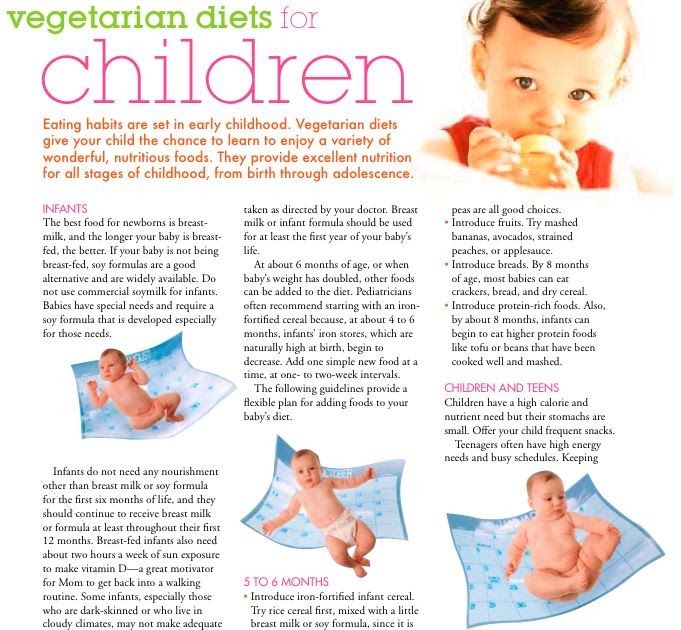
But there is another extreme - overeating associated with leptin resistance. When the hormone leptin does not work in the body, the child does not receive information to the brain that he is full, and continues to eat-eat-eat. This is a very rare occurrence, but mom will immediately understand that you need to see a doctor.
— Anastasia Ivanovna, what to do if the child eats little? How to restore the child's appetite?
— The simplest thing is to create conditions for the baby to get hungry faster, which means that he spends more energy, play outdoor games, walk more and more often in the fresh air, go to the pool if possible. All this greatly affects digestion, and if the child spends energy, he will replenish it by eating more breast milk or formula.
- Can a lack of interest in food go away naturally?
- The active phase of food interest falls on four to six months (everyone is different). And during this period it is better to have time to give the first complementary foods, because later the food interest begins to decline. If a child completely refuses any products, it is advisable not to force him to eat by pushing a spoon into his mouth or persuading him to swallow another spoon, because it is after such persuasion that babies most often appear. A child without conviction should understand that he is hungry and it is time to sit down and eat, not play.
If a child completely refuses any products, it is advisable not to force him to eat by pushing a spoon into his mouth or persuading him to swallow another spoon, because it is after such persuasion that babies most often appear. A child without conviction should understand that he is hungry and it is time to sit down and eat, not play.
— What can force-feeding turn into and is it possible to restore a child's interest in food without psychological pressure?
— From practice, I can say that the mother puts psychological pressure on the child, realizing that he must now eat, but the child is picky instead of eating, he has no appetite. The mother begins to panic that the child is hungry. In fact, a hungry child will let everyone around know about himself and will definitely eat. At the same time, he will eat a portion of food according to his needs, based on his energy costs. Mom just needs to calm down and remember the so-called intuitive baby food, when the child eats as often and in as much quantity as he needs. If he runs and jumps more, he will eat more, and if he sleeps off after vaccination, when the body is recovering, then perhaps you should not load him with food.
If he runs and jumps more, he will eat more, and if he sleeps off after vaccination, when the body is recovering, then perhaps you should not load him with food.
— If the baby refuses breast milk, will formula help?
- Mix is one of the alternative feeding options. If the child refuses breast milk, you need to choose something else, taking into account the age of the child and the situation in the family. After 6-7 months, often the rejection of breast milk comes with the start of the introduction of complementary foods, which the baby likes more. There are also cases when a mother carries a second pregnancy: the quality of milk changes - and the baby does not want to eat it. The inclusion of formula in a child's diet is always an individual decision to be made with your doctor.
- How to choose infant formula if the baby refuses breast milk?
- When choosing a mixture, you need to understand what the mother wants from the mixture - either this is the main food or supplementary food. It is important for yourself to decide which mixture you need, read the compositions of different types of food from manufacturers. There can be many recommendations - both by weight, and by the age of the child, and by filling with minerals. Tasks can also be different. If the child refused one mixture, a new milk or sour-milk mixture is selected. In case of an allergic reaction, you need to look for a therapeutic mixture without components that provoke allergies. There are times when a child does not like the taste, color, smell or texture of food. And if the child rejects food for the second or third feeding, then the diet should be reviewed and other options should be looked for, but after consulting a doctor.
It is important for yourself to decide which mixture you need, read the compositions of different types of food from manufacturers. There can be many recommendations - both by weight, and by the age of the child, and by filling with minerals. Tasks can also be different. If the child refused one mixture, a new milk or sour-milk mixture is selected. In case of an allergic reaction, you need to look for a therapeutic mixture without components that provoke allergies. There are times when a child does not like the taste, color, smell or texture of food. And if the child rejects food for the second or third feeding, then the diet should be reviewed and other options should be looked for, but after consulting a doctor.
- Can MAMAKO ® Premium formulas be used to replace breast milk? What is special about baby food based on goat milk?
- Goat and cow milk proteins are slightly different. It is generally accepted that cow's milk protein is coarser and larger, while goat's milk is softer and its protein molecules are smaller, therefore, they are easier to digest and assimilate, so digestion will be more comfortable.











